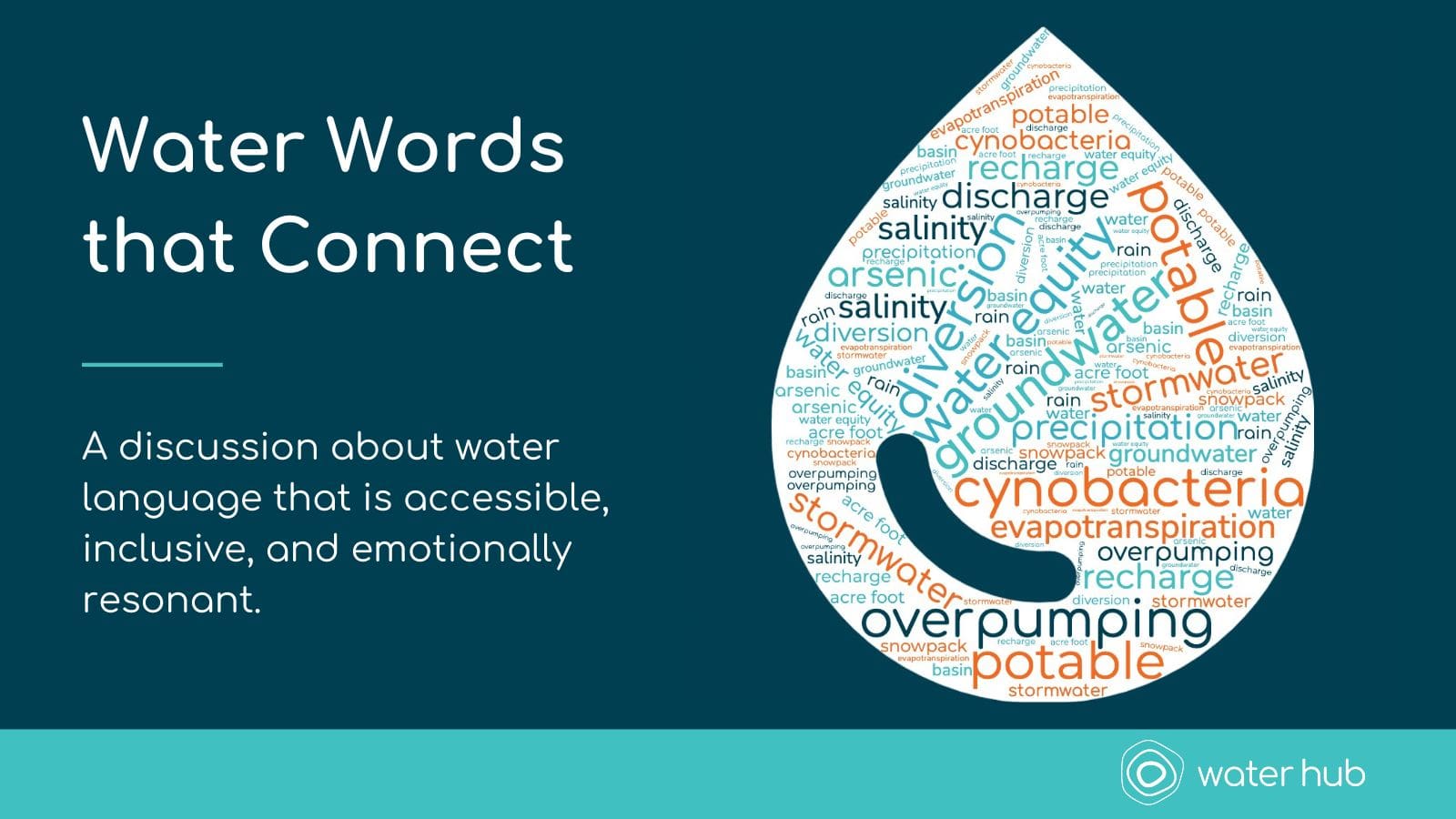Words are powerful tools for education and advocacy. Words touch our hearts and trigger action, but only if we choose the right ones. Technical terms and jargon may be commonplace for people that spend every day working on science and policy, but they’re not an effective means to connect with the audiences we’re serving.
Last week, the Water Hub hosted a Water Words that Connect workshop that dives into ways to make water language more accessible, inclusive, and effective at creating emotional connections that inspire action.
Key takeaways:
- Keep it simple: Avoid acronyms, insider lingo, and jargon. For example: Say drinking water instead of “potable” water.
- Sometimes more words are needed: Rather than relying on shorthand, use more words if needed to help get the point across. For example, instead of talking about “nutrient pollution,” explain that fertilizer and manure from farms is washing into our rivers and fueling toxic algae.
- Get specific: Describe real risks and real impacts on human life. For example: instead of just saying that too much arsenic is in our tap water, explain that overexposure to chemicals like arsenic can be harmful to human health causing a range of issues from diabetes to cancer .
- Paint a picture/tap into memory. Humanize your topic, get personal, and tap into people’s values. For example: Instead of just talking about climate change, reference changes in weather that impact your audience like stronger storms that are flooding homes or rising temperatures making it unsafe for people to work outdoors, and hard for kids to learn in overheated schools.
- Social math: Breakdown big numbers to a human scale that people can picture. For example, one acre foot of water is the equivalent of a football field covered in a foot of water or enough water supply for 1-2 families in a year. One part per billion is like one drop of something in a swimming pool.
- Localize it: Use examples that people can connect to — like local bodies of water or other landmarks. For example: Comparing a volume of water to Lake Tahoe or Lake Mead only works for audiences familiar with those places.
Some useful words to swap when communicating water issues and solutions:
- Aquifer → Underground reservoirs that supply drinking water and agricultural wells
- Frontline communities → Communities hit first and worst by fires, flooding, heat and other climate-driven disasters
- Impaired waterway → Sick or polluted creek/river/stream
- Permeable → Spongy, absorbent
- PFAS → Forever chemicals, toxic chemicals used for waterproofing, nonstick, and firefighting foam
- Urban stormwater → Rain running off roofs and roads
The full list of “Wonky Words and Simpler Swaps” that we started brainstorming during the workshop can be found here. This is a work in progress, so we invite your additions and comments.
For more tools that can help strengthen your water communications, check out these resources we mentioned during the workshop:
- Walton national voter poll – March 2022
- Western water polling roundup – April 2022
- Water Hub national voter poll – June 2022
- Soundbites that Stick blog post and recording
- Sustainable Groundwater Management Act glossary
- Message development worksheet (we dig deeper into messaging in this Interview Skills workshop)
You can check out the presentation slides here, and watch the full, hour-long recording here.
To keep up with our team and get the latest communications resources or workshops, follow us on Twitter at @Water_Hub or sign up for our monthly-ish newsletter, the Water Cooler.
